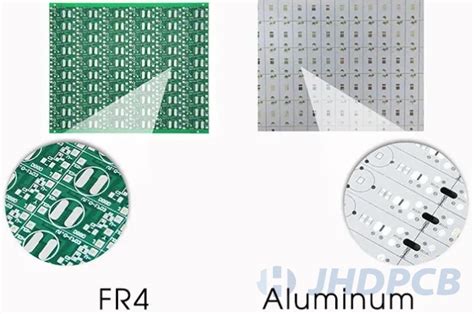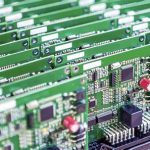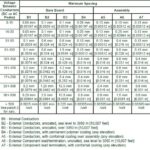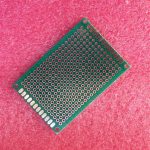What is FR4 Material?
FR4 is a composite material consisting of woven fiberglass fabric impregnated with an epoxy resin binder. The “FR” in its name stands for “Flame Retardant,” indicating its inherent ability to resist the spread of flames and withstand high temperatures. The number “4” represents the specific grade of flame retardancy, which is determined by the Underwriters Laboratories (UL) flammability rating system.
FR4 Properties
1. Mechanical Properties
FR4 boasts excellent mechanical properties, making it suitable for applications that require durability and strength. Some of its key mechanical properties include:
| Property | Value |
|---|---|
| Tensile Strength | 310 MPa |
| Flexural Strength | 415 MPa |
| Compressive Strength | 480 MPa |
| Density | 1.85 g/cm³ |
These properties enable FR4 to withstand the stresses and strains encountered during the manufacturing process and in the final application.
2. Electrical Properties
One of the primary reasons for FR4’s widespread use in the electronics industry is its exceptional electrical properties. The material offers:
| Property | Value |
|---|---|
| Dielectric Constant (at 1 MHz) | 4.7 |
| Dielectric Strength | 20 kV/mm |
| Volume Resistivity | 10^14 ohm-cm |
| Surface Resistivity | 10^14 ohm |
These properties make FR4 an excellent insulator, preventing short circuits and ensuring the proper functioning of electronic components.
3. Thermal Properties
FR4’s thermal properties play a crucial role in its suitability for electronic applications. The material exhibits:
| Property | Value |
|---|---|
| Glass Transition Temperature (Tg) | 130-140°C |
| Thermal Conductivity | 0.3 W/m·K |
| Coefficient of Thermal Expansion (CTE) | 14-16 ppm/°C |
The high glass transition temperature allows FR4 to maintain its structural integrity at elevated temperatures, while its low thermal conductivity helps prevent heat buildup in electronic components.
4. Flammability
As a flame-retardant material, FR4 meets the UL 94 V-0 flammability rating. This means that the material self-extinguishes within 10 seconds of being exposed to a flame, without dripping flaming particles. This property is essential for ensuring the safety of electronic devices and preventing the spread of fires.
Uses of FR4 Material
1. Printed Circuit Boards (PCBs)
FR4 is the most commonly used material for the fabrication of PCBs. Its excellent electrical insulation properties, coupled with its mechanical strength and thermal stability, make it an ideal choice for both single-sided and multi-layer PCBs. FR4 PCBs are found in a wide range of electronic devices, including:
- Computers and laptops
- Smartphones and tablets
- Consumer electronics
- Industrial control systems
- Automotive electronics
2. Electrical Insulation
Apart from its use in PCBs, FR4 is also employed as an electrical insulation material in various applications. Its high dielectric strength and low dielectric constant make it suitable for use in:
- Transformers
- Switchgear
- Motor insulation
- Generator insulation
3. Structural Components
FR4’s mechanical strength and dimensional stability make it a suitable material for structural components in electronic devices. It can be used to create:
- Mounting brackets
- Enclosures
- Stiffeners
- Spacers
These components help to protect and support electronic components, ensuring the overall durability and reliability of the device.
4. Aerospace and Military Applications
FR4’s combination of mechanical, electrical, and thermal properties, along with its flame retardancy, makes it a popular choice for aerospace and military applications. In these demanding environments, FR4 is used in:
- Avionics
- Radar systems
- Communication equipment
- Missile guidance systems
The material’s ability to withstand harsh conditions and maintain its performance under stress is crucial in these critical applications.

FAQs
1. What is the difference between FR4 and G10?
FR4 and G10 are both glass-reinforced epoxy laminates, but they differ in their resin chemistry and properties. FR4 uses a flame-retardant epoxy resin, while G10 uses a non-flame-retardant epoxy resin. As a result, FR4 has better flame resistance and slightly lower mechanical strength compared to G10.
2. Can FR4 be used in high-frequency applications?
While FR4 is suitable for many electronic applications, it may not be the best choice for high-frequency applications due to its relatively high dielectric constant and dielectric loss. For high-frequency applications, materials with lower dielectric constants, such as Rogers RO4003 or PTFE, are often preferred.
3. Is FR4 resistant to chemicals?
FR4 exhibits good resistance to a variety of chemicals, including acids, alkalis, and solvents. However, it may be affected by strong acids and some organic solvents. It is essential to consider the specific chemical environment in which FR4 will be used and consult the manufacturer’s data sheets for more information on chemical compatibility.
4. Can FR4 be machined?
Yes, FR4 can be machined using standard tools and techniques, such as drilling, milling, and routing. However, due to the abrasive nature of the glass fibers, it is essential to use carbide-tipped tools and to adjust machining parameters accordingly to minimize tool wear and ensure a good surface finish.
5. What are the available thickness options for FR4 Laminates?
FR4 laminates are available in a wide range of thicknesses, typically ranging from 0.2 mm to 3.2 mm. The most common thicknesses used in PCB Fabrication are 0.8 mm, 1.6 mm, and 2.4 mm. Custom thicknesses can also be obtained from manufacturers to meet specific application requirements.
Conclusion
FR4 is a versatile and widely used material in the electronics industry, thanks to its excellent combination of mechanical, electrical, and thermal properties. Its flame retardancy and ability to withstand harsh environments make it a popular choice for a wide range of applications, from PCBs and electrical insulation to structural components and aerospace systems.
By understanding the properties and uses of FR4, engineers and designers can make informed decisions when selecting materials for their projects, ensuring optimal performance, reliability, and safety. As technology continues to advance, FR4 remains a crucial material in the development of innovative electronic devices and systems.






Leave a Reply